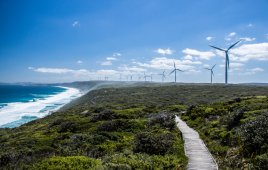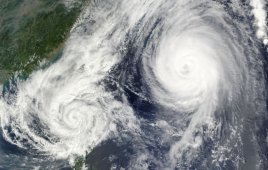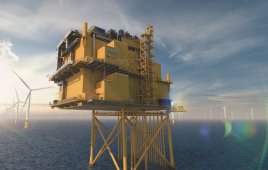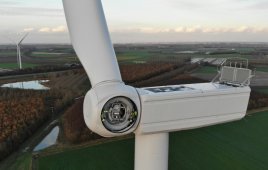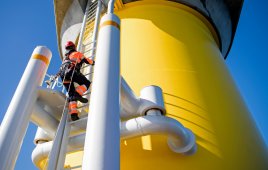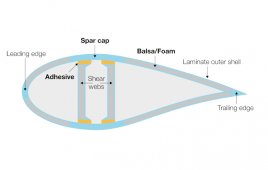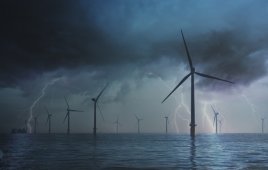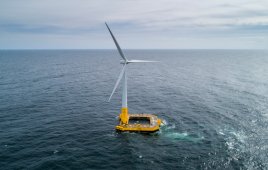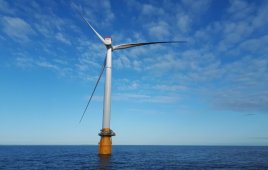Article shared with permission from Enerdatics In Jun 2022, the U.S. Department of Energy announced a new federal-state partnership to expand the domestic supply chain for offshore wind. The government is endorsing a set of federal, state and mutual commitments to incentivize manufacturing facilities for components, port capabilities and logistics networks. The measures are aimed…
Fail to prepare, prepare to fail: Operators will inherit the impact of greenflation – and they must be ready
By Evgenia Golysheva, VP of strategy and operations, ONYX Insight In their quest to lead the fight against climate change, clean energy industry stakeholders have had to overcome no end of challenges. And in doing so, huge progress has been made; the levelized cost of solar and wind energy has tumbled in the last decade,…
A lightweight with a heavyweight’s strength: Customized filtration solutions support weight reduction in wind turbine gearboxes
Case study by Eaton Gear-driven wind turbines are the heart and soul of sustainable, green energy generation from wind. With the urge of maximizing efficiency and reducing costs, engineers strive to build bigger, safer and more powerful turbines. Eaton’s customized TWF Twinfil filter systems enable designers to reduce weight of the gearboxes significantly while maintaining…
Resilience and integrity – hurricane readiness for offshore wind assets
By Jeffrey Lewis, technical advisor, BMT Extreme weather is no new threat for offshore operators, but it is growing. The number of tropical storms and hurricanes is steadily increasing year on year, with 13 severe storms reported in 2020, and weather events like these threaten devastation and pose challenges to companies with assets that sit…
HVDC transmission comes to U.S. offshore wind
By Kevin Pearce, grid access business development manager, Siemens Energy A planned offshore wind project in New York is gaining attention for its novel design that will, for the first time, leverage high-voltage direct current (HVDC) technology to support offshore wind in the United States. In a consortium with Aker Solutions, Siemens Energy is supplying…
The opportunity for digitalization to build the wind sector and accelerate the energy transition
By Jamie Stapleton, global digital portfolio leader, Hitachi Energy Digitalization has transformed the power sector over the past two decades. From lower monthly utility bills to reduced outages and faster response times, it has enabled greater transparency into operations and increased efficiency and reliability while decreasing costs. However, in order to meet sustainability goals, this…
Navigating early wind’s midlife crisis through data
By Staffan Lindahl, Co-founder at Bitbloom Wind energy is no longer new, and a growing cohort of generation assets have been operational for well over a decade. With the first flush of youth (turbocharged by subsidies) behind them but many years ahead before mandatory retirement, these early-mover assets can pose challenges for owners and operators.…
Future of airborne wind energy systems depends on safety and efficiency
By Jaap Bosch, head of business development, Ampyx Power Over the past decade, airborne wind energy systems (AWES) have made significant research and development advancements. Using tethered flying devices, including kites and planes, AWES convert wind energy into electricity and will soon be part of wind energy’s promise to be a dominant energy source. While…
Maximizing turbine performance with automatic lubrication solutions
By Hans Landin, group VP at Timken When it comes to the equipment inside wind turbines, performance and reliability can’t be compromised. Turbines are often in remote locations like mountaintops and offshore outposts. They must be built to withstand very harsh and dynamic operating conditions. They’re relentlessly pounded with weather extremes including oppressive heat, freezing cold,…
3 strategies to beat the wind technician shortfall
By J.L. Baker, CEO, GattiHR Many labor and workplace training concerns soon await the U.S. wind energy sector. In fact, several are unfolding right now. The industry currently employs about 7,000 wind-turbine technicians. That’s no doubt a hefty amount of labor. But according to industry reports, it’s not enough. Not even close. To meet the overwhelming…
Fewer parts and pieces: Rethinking wind turbine construction
By Gary Bills, Regional Director EMEA, K2 Management As the world edges toward a recovery from the COVID-19 pandemic, its demand and appetite remain unabated and continues to grow. The IEA projected that in 2022, there will be a 4% increase in global electricity demand. With gas prices at an all-time high and net-zero targets…
AI and machine learning: Bridging the divide between a wind development pipeline, operations and ROI
By Alex Baldassano, global head of energy transition, Climavision Energy transitions have been occurring globally since the 1800s. As demand patterns shifted and production technologies matured, the world witnessed an industrial revolution-fueled need for coal. This supply cornerstone gradually gave way to crude oil-based energy production in the early 1900s. Succumbing to the global oil…
Why the United States needs tailored solutions to realize floating offshore wind ambitions
By Thomas Dahlgren, President and CEO, COWI North America Commercial-scale floating offshore wind is approaching fast. In the United States, floating offshore wind is the only option on the West Coast and off the coast of Maine where the water depths preclude using bottom-fixed foundations. The Bureau of Ocean Energy Management (BOEM) has announced plans…
Low-frequency ultrasonic solutions for spar cap and shear web bonding inspection in wind blades
By Simon Alain, Senior Product Manager, Scanners and Inspection Solutions, Olympus In operation, a wind blade is subjected to considerable lift forces. To ensure the essential shear strength of the blade assembly, the top and bottom blade shells are bonded together, supported by a set of shear webs. The spar cap, the part of the…
How offshore weather awareness enhances safety and optimizes operations
By Mikko Nikkanen, Head of Maritime, Vaisala As wind energy continues to play an increasingly important role in future energy systems, developers are turning to offshore locations with inherently stronger, more consistent and more abundant winds to maximize the value of their projects. Just last year, investment in offshore wind surpassed $300 billion, according to…
The right rotary limit switch will reduce wind turbine downtime and maintenance costs
By Sam Salem and Peter Nyegaard Jensen, Wind Cluster; and Fabio Orlandi, TER Rotary limit switches are used in wind turbines for managing and controlling the position of the nacelle (yaw control) and in some cases for pitch angle of the blades (pitch control). Whenever the direction of the wind changes, the wind turbine nacelle will…
Oil debris monitoring saves time when it comes to wind turbine gearbox maintenance
By Jordan Freed, Director of Corporate Marketing & Product Strategy, Gastops There is an abundance of literature dating back over the past 20+ years about the challenge of premature gearbox failures, and the cost impact they have on wind turbine operation. While the principals of prognostics and health management (PHM) are well established, and the…
Innovation in floating wind will be crucial to the future of offshore energy
By Mark Goalen, director of offshore engineering, Houlder With offshore floating wind as a proven commercial reality, the challenges associated with the industry are now focused on delivering at scale, but there are still key innovation issues to be resolved across the industry. Meeting targets The global floating offshore wind industry is expected to reach…
Aluminum vs. copper: Which is best for cables used in the wind industry?
By James Moorman, VP of sales, Helukabel USA The wind industry wrapped up another banner year in 2020 by commissioning 16,913 MW overall as an industry. With over 60,000 wind turbines in operation across 41 states, OEMs, asset owners and independent service providers follow industry technology advancements to maximize the efficiencies of new turbines and…
Ready-to-float: A permanent cost reduction for offshore wind
By Robert Speht, CEO and co-founder of FloatWind Ltd The world’s first gigawatt-capacity floating offshore wind farm remains a little way off, but advances across the industry are bringing it ever closer. As it stands, floating offshore wind farms have a levelized cost of energy (LCOE) of more than three-times that of fixed-bottom wind farms. And…



